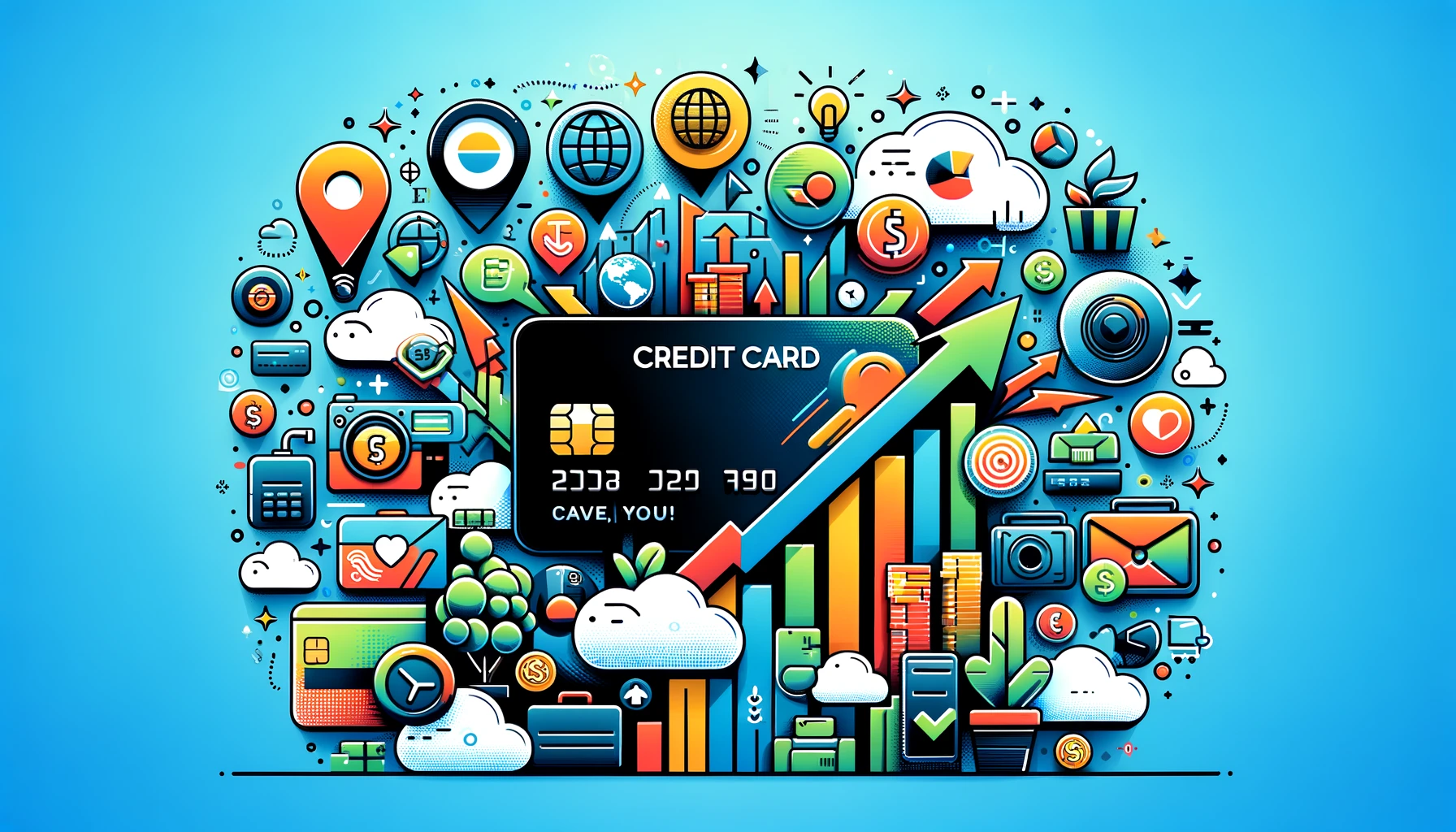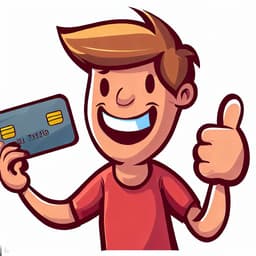Mastercard PayPass is a cutting-edge contactless payment technology that has revolutionized the way we make transactions. By allowing users to simply tap their card or device on a reader, it has made payments faster, more secure, and incredibly convenient. This article will demystify the PayPass feature, explore its numerous benefits, and provide insights into its real-world usage and acceptance. Additionally, we will discuss how to protect yourself from fraud and how PayPass can assist in financial management.
Key Takeaways
- Mastercard PayPass utilizes a one-time number for each transaction, enhancing security by not sharing the actual credit card number.
- The tap-to-pay method is generally more secure than swiping or inserting a chip, as it prevents the retailer from obtaining your card number.
- Transaction notifications are crucial for monitoring suspicious activity and preventing fraudulent charges on your account.
- Integrating PayPass with mobile wallets like Apple Pay and Google Pay adds a layer of convenience and can further protect your card details.
- Using PayPass responsibly can aid in managing credit card debt and budgeting, while also taking advantage of rewards and bonuses.
Understanding Mastercard PayPass Technology

How Contactless Payments Work
Mastercard PayPass operates on a contactless payment system that allows consumers to make purchases by simply tapping their card near a point-of-sale terminal equipped with the technology. The card communicates with the terminal using radio-frequency identification (RFID) or near-field communication (NFC), transmitting payment details securely and quickly.
- The card is tapped or waved over the terminal.
- The terminal reads a one-time number generated for the transaction.
- Payment is processed without the card number being exposed.
This method is not only efficient but also enhances security, as the one-time number used for the transaction cannot be reused. It’s a safeguard against potential fraud, ensuring that your actual card number remains protected. Contactless payments are becoming increasingly popular due to their convenience and the added layer of security they provide.
The Security Behind One-Time Numbers
Mastercard PayPass utilizes a unique feature for enhancing security: one-time numbers for each transaction. This means that every time you tap your card, a new number is generated, which is used only for that specific purchase. This temporary number is useless to potential fraudsters, as it cannot be reused.
- One-time numbers prevent your actual card details from being exposed during the transaction process.
- They are particularly useful for online shopping, where you can generate a one-time number to shield your real card information.
- Services like privacy.com allow you to create up to 12 one-time numbers per month, ideal for managing subscriptions or free trials.
By using one-time numbers, you’re adding an extra layer of security to your transactions, making it significantly harder for unauthorized users to compromise your card information.
Remember to consider adding your card to trusted payment systems like Google Pay or Apple Pay, which also utilize one-time numbers to protect your data. This integration ensures that even if a merchant’s system is compromised, your card number remains secure.
Comparing Chip, Swipe, and Tap to Pay Methods
The evolution of payment methods from swipe to chip and now to tap (PayPass) reflects the increasing focus on security and convenience. When swiping a credit card, the actual card number is transmitted to the retailer, posing a risk of theft. Chip transactions, on the other hand, use a one-time number for each transaction, enhancing security and reducing fraud. Tap to pay, including Mastercard PayPass, takes this a step further by not sharing your actual credit card number, instead using a unique number for each transaction.
| Payment Method | Security Level | Card Number Shared | Global Acceptance |
|---|---|---|---|
| Swipe | Low | Yes | High |
| Chip | High | No (One-time No.) | High |
| Tap to Pay | Highest | No (One-time No.) | Increasing |
The shift towards contactless payments not only offers enhanced security but also addresses the challenges of global acceptance. With the widespread use of chip cards and the growing adoption of tap to pay methods, consumers enjoy a seamless and secure transaction experience.
The Benefits of Using Mastercard PayPass

Enhanced Security Measures
Mastercard PayPass employs a robust security protocol that significantly reduces the risk of fraud. Each transaction uses a unique, encrypted code, ensuring that even if the transaction data is intercepted, it cannot be reused for fraudulent purposes. This one-time code is a critical component of the contactless payment’s defense mechanism.
Mastercard’s global expansion is driven by its network’s adaptability, technological innovations, strategic partnerships, and acquisitions.
In addition to the one-time code, Mastercard PayPass also benefits from the inherent security features of the card itself, which includes an embedded chip that is much more secure than the magnetic stripe used in traditional swipe cards. Here are some practical steps to enhance security further:
- Use services like Privacy.com to generate one-time use numbers for online shopping.
- Enable multi-factor authentication wherever possible.
- Regularly update software on devices used for payments, such as smartphones and payment terminals.
Convenience and Speed of Transactions
The allure of Mastercard PayPass lies not only in its enhanced security but also in the sheer convenience and speed it offers to users. Transactions are completed with a simple tap, eliminating the need to insert a card or enter a PIN. This contactless method significantly reduces the time spent at the checkout, streamlining the payment process for both customers and merchants.
- Time saved per transaction: Contactless payments can be up to twice as fast as traditional methods.
- Ease of use: No need to fumble with cash or wait for card processing.
- Hygienic: Reduces the need to touch public devices.
With Mastercard PayPass, the days of lengthy queues and slow payment processing are becoming a thing of the past. The technology is designed to keep pace with the modern consumer’s need for quick and efficient service.
Reducing the Risk of Card Number Theft
Mastercard PayPass significantly diminishes the risk of card number theft by utilizing a unique approach to transaction processing. Each tap to pay transaction generates a one-time number, ensuring that your actual credit card details remain secure. This method is a stark contrast to traditional swiping, where your card number is directly transmitted to the retailer.
By opting for contactless payments, you effectively create a barrier against potential fraudsters, as they are unable to capture your permanent card information.
Here are some practical tips to further protect your card number:
- Use contactless payments whenever possible.
- For online purchases, consider using one-time card numbers if available.
- Add your card to digital wallets like Apple Pay or Google Pay for enhanced security.
- Always opt for the chip reader over swiping to minimize exposure of your card details.
Real-World Usage and Acceptance

Global Acceptance of Contactless Payments
The adoption of Mastercard PayPass has seen a significant rise globally, with a vast network of merchants now equipped to accept contactless payments. This widespread acceptance marks a shift towards a more convenient and secure transaction method for consumers worldwide.
In many regions, contactless payments are not just a luxury but a necessity, especially in urban environments where speed and efficiency are paramount. Users can simply tap their card or device to complete a transaction, without the need to insert a card or handle cash.
The ease of use and the added security layer of not having to share your actual card number with every transaction contribute to the growing preference for contactless payments.
Here’s a quick look at the acceptance of contactless payments in different settings:
- Retail stores and supermarkets
- Public transportation systems
- Restaurants and cafes
- Entertainment venues like cinemas and stadiums
- Vending machines and kiosks
User Experiences with Declined Transactions
Despite the convenience of contactless payments, users occasionally face declined transactions with Mastercard PayPass. The reasons for declines can vary, from technical glitches to suspected fraudulent activity. When a transaction is declined, some users report that using the card as a chip insert instead of the tap-to-pay feature can sometimes resolve the issue.
In instances of declined transactions, banks often send immediate notifications to the cardholder, querying if the attempted purchase was legitimate. This rapid communication allows users to confirm or deny the transaction, enhancing security and providing peace of mind.
Users have shared mixed experiences regarding declined transactions:
Integration with Mobile Wallets like Apple Pay and Google Pay
The integration of Mastercard PayPass with mobile wallets such as Apple Pay and Google Pay has revolutionized the way we make transactions. By adding your Mastercard to these wallets, you benefit from an additional layer of security since only a one-time number is shared during the transaction, rather than your actual card number. This effectively shields your sensitive information from potential fraud.
Mobile wallets not only streamline the payment process but also incorporate features like two-factor authentication, adding an extra hurdle for unauthorized users.
Furthermore, the convenience of having your Mastercard linked to a mobile wallet means you can make payments swiftly without the need to carry your physical card. This is particularly useful in situations where you might not have your wallet on hand, but almost always have your smartphone with you.
Protecting Yourself from Fraud

The Importance of Transaction Notifications
Transaction notifications are a critical component of modern financial security, especially with the rise of contactless payments like Mastercard PayPass. Receiving instant alerts for each transaction can serve as an early warning system against unauthorized use of your card. This proactive approach allows cardholders to quickly identify and address any suspicious activity.
- Email Notifications: Many issuers provide email alerts for every transaction, which can be a powerful tool for monitoring account activity.
- Mobile Alerts: Notifications on your phone for each use of your card can inform you of purchases in real-time, often before the receipt is even printed.
- Customizable Alerts: Some banks offer the ability to customize the types of alerts you receive, such as transactions over a certain amount or international purchases.
By staying vigilant and monitoring transaction notifications, you can significantly reduce the risk of falling victim to fraud. It’s a simple yet effective layer of defense that keeps you one step ahead.
While some may find frequent alerts somewhat bothersome, the peace of mind they provide is invaluable. It’s a small price to pay for the added security and control over your financial transactions.
Tips for Safe Online Shopping
When shopping online, it’s crucial to use secure methods to protect your payment information. Always opt for a secure web browser that prioritizes your privacy. This can significantly reduce the risk of payment card fraud.
- Use services that generate one-time use numbers for online transactions, such as Privacy.com.
- Prefer payment options like Google Pay, Apple Pay, or PayPal, which offer an additional layer of security.
- Ensure the Mastercard Security Code is safeguarded and never shared; it’s vital for preventing unauthorized use.
Stay vigilant and regularly check your statements to catch any fraudulent activity early.
Why Debit Cards May Pose a Higher Risk
Debit cards, while convenient, may pose a higher risk for fraud and theft compared to credit cards. When fraudulent transactions occur on a debit card, the money is immediately taken from your bank account, which can lead to direct financial loss and potential overdraft fees until the issue is resolved. In contrast, credit card charges are a claim against a line of credit, not your actual funds, providing a buffer against immediate financial impact.
Debit cards do not typically offer the same level of fraud protection as credit cards. This means that disputing unauthorized transactions can be more cumbersome and less favorable for the cardholder.
Additionally, credit cards often come with rewards programs and purchase protections that debit cards lack. These benefits can include extended warranties, price protection, and rewards points, which add value to each transaction made with a credit card.
Mastercard PayPass and Financial Management

Managing Credit Card Debt with Contactless Payments
Contactless payments with Mastercard PayPass can be a strategic tool in managing credit card debt effectively. By utilizing the tap-to-pay feature, you can avoid the pitfalls of sharing your actual credit card number since only a one-time number is used for each transaction, enhancing security and reducing the risk of fraud.
Making more than the minimum payment each month is a critical step in overcoming credit card debt. This approach can prevent the accumulation of interest charges, which can significantly increase the total amount owed over time.
Financial empowerment through smart credit cards with benefits like enhanced security, convenience, rewards, and financial management. Tips for responsible credit usage included.
It’s important to create a plan that includes setting aside funds for emergency savings and retirement, rather than just covering interest charges. By leveraging the convenience of Mastercard PayPass, you can maintain better control over your spending, ensuring that your payments are contributing to debt reduction rather than just maintaining it.
The Role of PayPass in Budgeting and Spending
Mastercard PayPass can play a pivotal role in personal financial management by streamlining the budgeting and spending process. By utilizing contactless payment technology, consumers can better track their expenses and maintain control over their finances. The integration of PayPass with digital wallets, such as Apple Pay and Google Pay, further enhances this control by using tokenization services like Mastercard’s In Control for Mobile Payments (ICMP) and Mastercard Digital Enablement Service (MDES).
When it comes to managing credit card debt, the convenience of PayPass can be a double-edged sword. While it makes transactions quicker and easier, it’s essential to remain vigilant about spending. Paying more than the minimum on credit card bills is crucial, especially when APRs are high. A strategic approach to using PayPass involves:
- Monitoring spending in real-time through mobile app notifications.
- Setting spending limits to avoid overspending.
- Leveraging PayPass for budget-friendly purchases while avoiding impulse buys.
The ease of tap-to-pay features should be balanced with disciplined budgeting practices to prevent accumulating debt. Remember, the goal is to use PayPass as a tool for financial efficiency, not as a means to increase debt.
Leveraging PayPass for Rewards and Bonuses
Mastercard PayPass users can take advantage of various rewards and bonuses that incentivize strategic spending. These perks often come in the form of points, miles, or cashback, and can significantly enhance the value of your transactions. However, it’s crucial to understand the terms and conditions associated with these offers to maximize benefits without falling into the trap of overspending.
- Earn bonus points after meeting spending thresholds within a set time frame.
- Redeem points for travel, merchandise, or gift cards.
- Take advantage of special promotions to earn additional points or miles.
Credit card bonuses incentivize spending but can lead to debt if not managed carefully. Issuers profit from interest charges and fees. Strategic spending and redemption optimize rewards.
Remember, while bonuses can be lucrative, they often come with an annual fee and higher interest rates. It’s important to weigh these costs against the potential rewards to ensure that you’re truly coming out ahead.
Conclusion
In summary, Mastercard PayPass offers a secure and convenient way to make payments without the need to swipe or insert a card. By utilizing a unique one-time number for each transaction, it protects your card details from potential fraud. While contactless payments are becoming increasingly popular, it’s important to stay vigilant by monitoring transactions and considering the use of notifications or one-time card numbers for online purchases. Whether you choose to add your card to a digital wallet or use the chip feature, the key is to prioritize security and convenience in your payment methods. Embracing these technologies can provide peace of mind while keeping your financial information safe.
Frequently Asked Questions
What is Mastercard PayPass and how does it work?
Mastercard PayPass is a contactless payment feature that allows you to make payments by simply tapping your Mastercard on a compatible point-of-sale terminal. It uses a technology called Near Field Communication (NFC) to communicate with the terminal and process the payment without requiring the card to be swiped or inserted into a card reader.
Is Mastercard PayPass secure?
Yes, Mastercard PayPass is secure. It uses advanced encryption and a unique transaction code for each payment, which means your actual card number is not shared with the merchant. This greatly reduces the risk of your card information being stolen or cloned.
What should I do if my Mastercard PayPass transaction is declined?
If your Mastercard PayPass transaction is declined, you can try inserting the card into the card reader using the chip. If the transaction still doesn’t go through, contact your bank to ensure there are no issues with your card or account.
Can Mastercard PayPass be used for online shopping?
Mastercard PayPass itself is designed for in-person transactions. However, for online shopping, you can use services like Mastercard Click to Pay, which offers a similar level of security by not sharing your actual card number with the merchant.
How can I protect myself from fraud when using contactless payments?
To protect yourself from fraud, enable transaction notifications for your card, use two-factor authentication where possible, and consider adding your card to a digital wallet like Apple Pay or Google Pay, which use one-time numbers for transactions.
Does using Mastercard PayPass affect how I manage my finances?
Using Mastercard PayPass doesn’t directly affect your financial management, but it can be integrated into your budgeting and spending plans. It can also be used to leverage rewards and bonuses offered by credit card issuers, which can aid in managing credit card debt if used responsibly.



